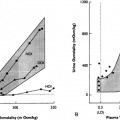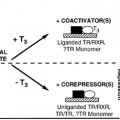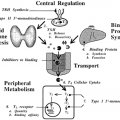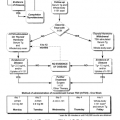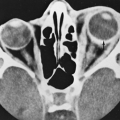CRANIOPHARYNGIOMAS
Craniopharyngiomas are relatively rare neoplasms that arise from epithelial remnants of the Rathke pouch and are typically found in the suprasellar region in children or adolescents; they account for ˜5% of all intracranial neoplasms in childhood.37 These tumors tend to grow slowly, and the patients often present with compression of adjacent neural structures, such as the optic chiasm. Hypopituitarism also may occur. Surgical decompression is the optimal treatment for symptom relief and immediate palliation. However, the location, proximity, and adhesiveness of the tumor to adjacent neural structures often preclude an effective total resection. Aggressive attempts at total resection carry high rates of morbidity and mortality.38 The management options for craniopharyngioma include total resection, which is applicable only to a very small proportion of patients; subtotal resection alone; or subtotal resection and postoperative radiotherapy. To understand the role of postoperative radiotherapy, it is necessary to compare the results for total or subtotal resection alone with subtotal resection plus postoperative radiotherapy. In the absence of a prospective randomized trial, the only data available for comparison are retrospective single-institution reports that span several decades. including an institutional bias regarding therapeutic preference and the impact of technologic advances on diagnosis, resection, and radiotherapy. Although flawed, this database represents the only opportunity to compare the various treatment options for the management of craniopharyngioma.
OVERALL SURVIVAL
A review of the English language literature from the mid-1960s through 1998 yields 34 reports from which management and outcome data can be summarized39 (Table 22-5). The data are broken down into three categories representing total resection, subtotal resection, and surgery plus postoperative radiotherapy. Actuarial 5- and 10-year survival rates after total resection were 81% and 69%. After subtotal resection alone, the survival rates were 53% and 37% at 5 and 10 years, and if radiotherapy was added, the survival rates were 89% and 77% at 5 and 10 years, respectively. There is a trend toward longer survival in later reports, which probably reflects improvements in neuroimaging, neurosurgery, radiotherapy, and overall medical management. Nonetheless, the outcome for patients undergoing subtotal resection is inferior to that of patients who also receive postoperative radiotherapy. Although the inferior outcome of patients who undergo subtotal resection could reflect a patient selection bias, the overall 5- and 10-year survival rates of 53% and 37% do not indicate a benign disease process.
Stay updated, free articles. Join our Telegram channel

Full access? Get Clinical Tree



